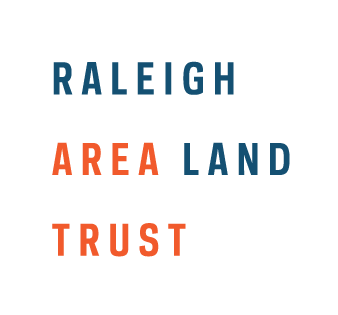Affordable Housing as a Path to Health Equity
North Carolina can transform communities with permanent home affordability and healthy families by employing the community land trust model.
By Dr. Rasheeda Taliaferro Monroe, WakeMed Hospital and Kevin Campbell, Raleigh Area Land Trust
Triangle communities are grappling with dual crises: housing instability and health disparities. The need for innovative solutions has never been more urgent. Millions of families face daily struggles, underscoring the critical link between public health and stable housing. Today, Wake County’s first community land trust model offers a groundbreaking approach to affordable housing and community well-being.
The Role of CLTs: Fostering Equitable Housing and Health
Born out of necessity and civil rights activism in the 1970s to combat urban disinvestment and land speculation, community land trusts (CLTs) have become a potent tool for addressing the intertwined issues of affordable housing and community well-being.
At its core, the CLT model is grounded in the principle of community stewardship. In it, the community retains ownership of the land while the residents own their homes, thus safeguarding them from the pressures of the speculative market. This innovative approach provides a pathway to permanent affordability and a lower entry point to homeownership for families.
Additionally, unlike other housing solutions where outside investors are motivated by profit, community ownership models like CLTs put power back into the hands of residents, allowing them to shape housing policies and investment decisions. This grassroots approach helps curb gentrification and prevent displacement, aligning housing developments with the community’s actual needs and priorities.
How RALT Combats Gentrification and Preserves Diversity
Founded as a non-profit organization promoting equitable access to affordable housing, the Raleigh Area Land Trust (RALT) is proud to bring the CLT movement to Wake County, North Carolina, where rapid gentrification threatens to displace long-time residents. By removing land from the speculative market, RALT preserves socioeconomic diversity and promotes inclusive growth.
RALT caters to families between 50-80% of the area median income (AMI.) That means a family of four earning between $61,000-$73,400 would qualify for one of our homes. By catering to this “missing middle,” we ensure that all residents, regardless of background, can access safe, stable, affordable housing options, thus creating a thriving community environment.
One of our flagship projects, the Cottages of Idlewild, exemplifies the power of the CLT approach. Breaking ground in the Fall of 2024, this development features homes centered around a communal greenspace, fostering a sense of neighborhood and community. Situated adjacent to a city park and within half a mile of a new public transit line, the building site for the Cottages of Idlewild promotes community interaction and access to essential amenities for health and well-being.
Our Impact on Health and Well-being
The connections between housing and health are well-known, but the uniqueness of the CLT model provides even more opportunities for organizations like RALT to make a substantial impact. Research has shown that stable, affordable housing can reduce stress, improve mental health, and lead to better overall health outcomes. This stress reduction improves our resident’s mental health and positively affects physical health, reducing the risk of stress-related conditions like hypertension and heart disease.
Another significant health benefit RALT offers is the higher physical standards of the housing units compared to previous living conditions. Our residents have come from substandard housing with mold, pests, and inadequate heating, which can contribute to respiratory problems and other health issues. Our CLT homes are built or renovated to higher standards, providing healthier living environments that can reduce the incidence of asthma and other respiratory conditions. By addressing residents’ physical and mental health needs, our community members will live longer, healthier lives.
Future Direction and Potential
RALT's commitment to building 100 homes over the next five years is just the beginning. By advocating for supportive policies and increasing investment in community-led housing solutions, we can create a more equitable and sustainable housing landscape where everyone has the opportunity to thrive. RALT envisions a future where community land trusts play a central role in housing policy, ensuring that affordable, quality housing is accessible to all.
About the Authors
Dr. Rasheeda Taliaferro Monroe is a distinguished board-certified pediatrician with WakeMed Physician Practices—Pediatrics and a Raleigh Area Land Trust board member. She previously served as the medical director for WakeMed’s Pediatric Outpatient Clinics and led several educational programs for medical students and resident physicians.
Kevin Campbellis a visionary leader committed to transforming lives through affordable homeownership. As the Executive Director of the Raleigh Area Land Trust, Kevin is helping to shape the housing landscape in Wake County.
